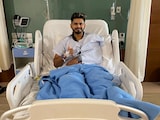Peripheral artery disease (PAD) is a medical condition characterised by the narrowing or blockage of arteries that are not part of the heart and brain, typically affecting arteries in the legs. The reduced blood flow to the affected area can lead to symptoms such as leg pain, numbness, difficulty walking, slow-healing wounds, and coldness in the lower extremities. Read on as we list its signs, causes, treatment and prevention tips.
Causes
The underlying cause of PAD relates to atherosclerosis, which is the buildup of plaque in the arterial walls, leading to a narrowing of the arteries. The accumulation of plaque is primarily caused by risk factors such as smoking, high blood pressure, high cholesterol, diabetes, obesity, a sedentary lifestyle, and a family history of PAD or cardiovascular disease.
Signs
Signs of PAD may include discomfort, cramping, or pain in the legs (especially during physical activity), which is relieved with rest. Some individuals may also experience non-healing wounds or ulcers on their feet or toes, and in severe cases, gangrene can develop.
Treatment
Treatment for PAD aims to relieve symptoms and prevent further progression of the disease. Lifestyle modifications include quitting smoking, managing blood pressure and cholesterol levels, exercising regularly, and maintaining a healthy weight.
Medications can be prescribed to manage underlying conditions and improve blood flow, or medications to control blood sugar levels in diabetes. In more severe cases, interventions such as angioplasty (where a balloon-like device is used to open the narrowed artery) or surgical procedures like bypass surgery may be necessary.
Prevention Tips
- Smoking is a major risk factor for peripheral artery disease (PAD) and can worsen symptoms. Quitting smoking can help improve blood flow and reduce the risk of complications.
- Regular physical activity can help improve circulation and relieve symptoms of PAD. Walk or engage in low-impact exercises daily to improve blood flow in the legs and increase overall cardiovascular health.
- Losing excess weight can reduce the strain on your arteries and improve blood flow. Following a healthy diet and portion control can help you achieve and maintain a healthy weight.
- High blood pressure and high cholesterol can contribute to the development and progression of PAD. Take prescribed medications, follow a healthy diet, and exercise regularly to keep these levels in check.
- If you have diabetes, it is essential to control your blood sugar levels to prevent complications like PAD. Monitor your blood sugar regularly, take medications as prescribed, follow a diabetes-friendly diet, and stay physically active.
- Foot ulcers and infections are common in individuals with PAD. Inspect your feet regularly for any cuts, sores, or infections. Keep your feet clean and moisturized, wear comfortable shoes, and seek immediate medical attention for any foot problems.
- Your doctor may prescribe medications like blood thinners, or antiplatelet drugs to reduce the risk of blood clots and improve blood flow. Take these medications as prescribed to manage PAD effectively.
- Regular check-ups and follow-up appointments are crucial for managing PAD. Your doctor will monitor your symptoms, adjust medications if needed, and provide guidance on lifestyle changes. Follow their recommendations and communicate any concerns or changes in your condition.
It is important to seek medical attention if you experience symptoms of PAD or if you have any risk factors. A healthcare professional can assess your condition, perform relevant tests, and provide appropriate treatment options tailored to your needs.
Disclaimer: This content including advice provides generic information only. It is in no way a substitute for a qualified medical opinion. Always consult a specialist or your own doctor for more information. NDTV does not claim responsibility for this information.















